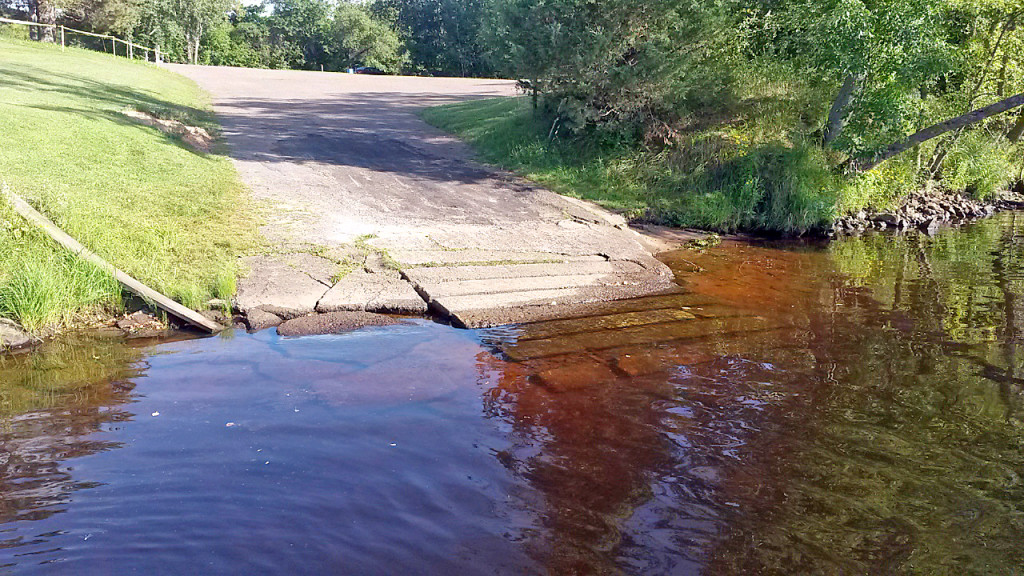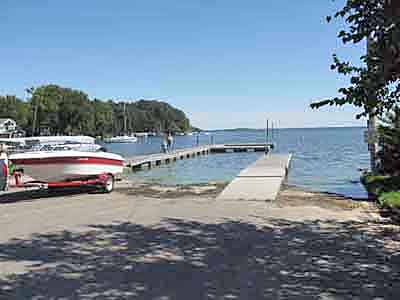What Makes a Boat Launch Safe or Unsafe?
 Summer means fun on the water for millions of boating enthusiasts around the United States. Whether your preference is for the action of water skiing or the relaxation of a leisurely pontoon ride, all boating activities share one common requirement – getting the boat safely into and out of the water.
Summer means fun on the water for millions of boating enthusiasts around the United States. Whether your preference is for the action of water skiing or the relaxation of a leisurely pontoon ride, all boating activities share one common requirement – getting the boat safely into and out of the water.
Our water resources engineers and landscape architects have worked on boating facility projects at numerous parks and recreation areas, designing ramps that allow all users to safely and efficiently access the water. An unsafe ramp can cause a variety of problems, ranging from congestion at the ramp and parking lot because of inefficient loading to the danger of the towing vehicle being pulled into the water.
That’s what happened in June 2013 in the Village of Lake Hallie, Wisconsin, when a van was pulled into the Chippewa River while a boat was being loaded onto its trailer. A 3-year-old boy was trapped in the van, but a bystander was able to break a window and rescue the boy from the submerged vehicle. Fortunately, the youngster was revived and has made a full recovery.
That near-tragedy led the Village to make plans to improve the safety and functionality of its boat landing, pictured above. The Village called on Ayres Associates to not only design a safer boat launch, but also to assist in finding funds to help pay for the work. The Village recently received a $131,785 Recreational Boating Facilities grant from the Wisconsin Department of Natural Resources to make major improvements.
The old Village of Lake Hallie ramp was too short, causing trailers to fall off the end of the existing slab. It’s also aligned slightly in the upstream direction, which creates difficult launching and loading conditions due to the current. The new two-stall ramp with adjacent floating docks complies with Americans with Disabilities Act standards.
How can you tell if a boat launch is unsafe? Ayres advises looking for steep slopes, broken concrete, scoured or eroded areas around the landing, swift currents, and/or an algae-covered surface on the ramp that would make it too slippery to pull the boat back out. The lack of boarding platforms also makes for unsafe launching conditions.
Ayres incorporates a variety of design features to make boat ramps safer and more accessible. These include properly aligning the ramp with the current in river settings; making sure the slope down to the water is less than 15%; providing proper tie down/staging areas close to the ramp; providing accessible pay station kiosks; and protecting the site from “power loading.” Power loading involves using the boat’s motor to assist in getting the boat on or off its trailer, which creates erosion and drop-offs at the end of the ramp and requires more frequent maintenance.
 Ayres designed an improved boat launch for the City of Middleton, Wisconsin. The new boat launch on Lake Mendota replaced an existing stationary pier with a fluctuating pier to improve passengers’ access to their vessels and accommodate access at high water levels. The design decreases launch time for most visitors and reduces congestion at the launch during peak times because it is more accessible and user friendly.
Ayres designed an improved boat launch for the City of Middleton, Wisconsin. The new boat launch on Lake Mendota replaced an existing stationary pier with a fluctuating pier to improve passengers’ access to their vessels and accommodate access at high water levels. The design decreases launch time for most visitors and reduces congestion at the launch during peak times because it is more accessible and user friendly.
Paying for improvements can be a challenge, but the Wisconsin DNR’s Recreational Boating Facilities grant program is an example of funding available to help with projects ranging from feasibility studies to ramp and boarding dock construction projects. Wisconsin municipalities, counties, tribes, sanitary districts, and lake districts/associations are eligible, and applications are accepted at any time. The Knowles-Nelson Stewardship Program also offers grants for paddle sport launch facilities and provides support for amenities such as kiosks and piers. Local units of government and non-profit conservation organizations can apply for many of the specific grants under this program.
Our Green Bay, Wisconsin, office helped the City of Marinette to win $203,057 of the total cost of $406,114 for Phase 1 of its Menekaunee Harbor Public Boating Facility Development project. The project includes engineering and design, stormwater management, and landscaping. The grant was awarded through the Recreational Boating Facilities grant program.
Ayres recommends getting DNR grant staff involved early in the application process, as they can provide valuable insight into project design parameters and into requirements for a successful grant. Ayres has worked on many grant applications and can help make the process easier.
Before launching your boat, Ayres advises inspecting the ramp to make sure it’s safe and to avoid launching in high water conditions. Also be sure to put the drain plug in the boat before putting the boat in the water – a lesson many have learned through experience! For basic instructions on how to launch a boat, check this site. And for more on overall boating safety, visit the Wisconsin DNR website. And just for fun, here’s a video for those who dream about having a boat so big that it has to be launched sideways!
If you have a question for our experts about boat landing design, please leave a comment below, and we’ll ask them for an answer.

Post a comment: